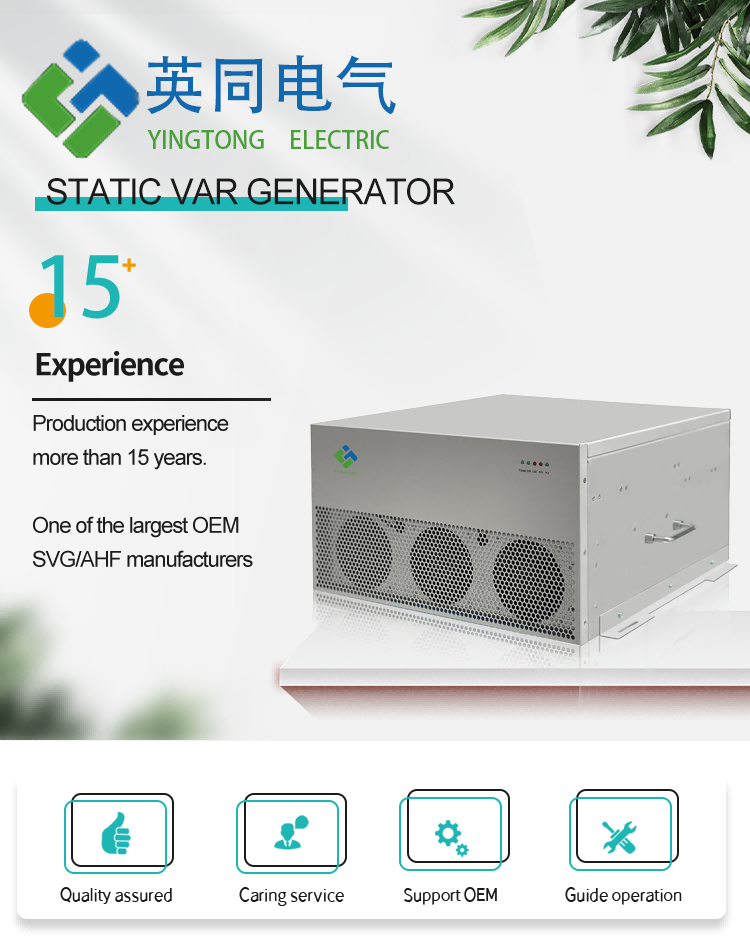
Power Quality Solutions: The Role of AHF and SVG
Modern power systems face increasing power quality issues such as harmonic distortion, voltage fluctuations, and reactive power imbalance. These problems can damage equipment and reduce system efficiency. Traditional solutions like capacitor banks and passive filters have limitations in speed, accuracy, and harmonic adaptability. Today, Active Harmonic Filters (AHF) and Static Var Generators (SVG) are becoming more effective solutions for power quality management.
Common Power Quality Problems
1. Growth of Nonlinear Loads
Industrial equipment like variable frequency drives, data centers, and renewable energy inverters generate harmonics. These harmonics cause transformer overheating, increase cable losses, and may lead to equipment failure. For example, some solar plants experience 1015% efficiency loss due to harmonic issues.
2. Limitations of Traditional Reactive Power Compensation
ThyristorSwitched Capacitors (TSC) are commonly used but have several drawbacks:
Harmonic sensitivity: Grid harmonics can cause capacitor resonance
Slow response: Typical reaction time exceeds 20ms
Threephase imbalance: May overcompensate or undercompensate during load variations
3. Instability from Renewable Energy
Solar and wind power generation fluctuates with weather conditions, causing voltage variations that traditional compensators cannot handle quickly enough.
How AHF and SVG Work
1. AHF: Effective Harmonic Filtering
Operation principle: Detects harmonic currents and injects oppositephase currents to cancel them
Key advantages:
Over 95% harmonic elimination
Response time under 1ms
Modular design allows parallel operation for highcapacity applications
2. SVG: Dynamic Reactive Power Compensation
Operation principle: Adjusts output voltage phase and magnitude to provide realtime reactive power support
Key advantages:
Millisecondlevel response stabilizes voltage
Reduces need for additional harmonic filtering
3. Combined AHF+SVG Solution
In some applications, TSC provides basic compensation while AHF and SVG handle fine adjustments. A steel plant using this approach improved power factor from 0.82 to 0.98 and reduced line losses by 30%.
Practical Applications
1. Industrial Sector
Rolling mills and arc furnaces: SVG stabilizes voltage while AHF eliminates VFD harmonics
Data centers: AHF ensures clean power supply, SVG optimizes HVAC system efficiency
2. Renewable Energy Integration
Solar plants: SVG manages voltage fluctuations, AHF reduces inverter harmonics
Wind farms: SVG compensates reactive power, AHF filters converter harmonics
3. Urban Power Distribution
Lowvoltage networks: SVG corrects phase imbalance, AHF reduces harmonic pollution
Future Development Trends
1. Smart control: AI algorithms to enhance AHF/SVG precision
2. Energy storage integration: Combined operation with battery systems
3. Simulation testing: Software modeling for different grid conditions 
Subscribe to us to enjoy event prices and get some of the best prices.
 IPv6 network supported
IPv6 network supported

